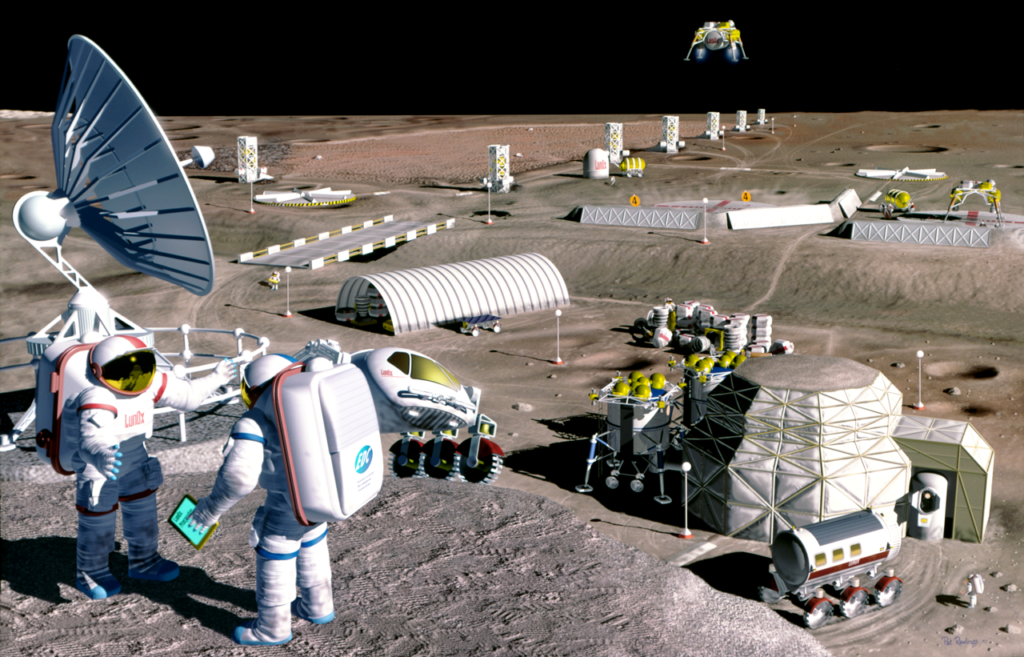The vast expanse of the universe never ceases to amaze us with its enigmatic and extraordinary phenomena. From the mysterious depths of black holes to the dazzling explosions of supernovae, the cosmos is filled with wonders that challenge our understanding of the universe. In this article, we will explore some of the most fascinating space oddities that continue to intrigue astronomers and astrophysicists alike.
Read More: The Business of Space: Commercializing the Final Frontier
Contents
- 1 Black Holes: The Cosmic Vacuum Cleaners
- 2 Quasars: Cosmic Beacons
- 3 Neutron Stars: Densities Beyond Space Oddities Imagination
- 4 Gamma-Ray Bursts: Cosmic Explosions
- 5 Exoplanets: Worlds Beyond Our Solar System
- 6 Dark Matter: The Invisible Universe
- 7 Supernovae: Celestial Fireworks
- 8 FAQs
- 9 The Final Words
Black Holes: The Cosmic Vacuum Cleaners

What are black holes?
Black holes are cosmic entities characterized by their intense gravitational pull, so strong that not even light can escape from them. They are formed from the remnants of massive stars that have undergone gravitational collapse.
How do black holes form?
When a massive star reaches the end of its life cycle, it undergoes a supernova explosion, leaving behind a dense core. If the core’s mass exceeds a critical threshold known as the Chandrasekhar limit, it collapses into a singularity, creating a black hole.
Unusual characteristics of black holes
Black holes possess several unique properties, including an event horizon, beyond which no information can escape, and a gravitational pull so strong that it distorts space-time itself. They also exhibit phenomena such as time dilation, where time appears to slow down near the event horizon.
Quasars: Cosmic Beacons
Understanding quasars
Quasars, short for “quasi-stellar radio sources,” are among the brightest objects in the universe, emitting prodigious amounts of energy across the electromagnetic spectrum. They are powered by supermassive black holes at the centers of distant galaxies.
Unique features of quasars
Quasars display rapid variability in their brightness, suggesting dynamic processes occurring near the black hole. They also exhibit strong redshifts, indicating their extreme distance from Earth and providing valuable insights into the early universe.
Quasars’ role in the universe
Studying quasars helps astronomers understand the evolution of galaxies and the conditions prevailing in the early universe. They serve as cosmic beacons, illuminating the distant corners of the cosmos and providing clues about its origins.
Neutron Stars: Densities Beyond Space Oddities Imagination

Definition and formation of neutron stars
Neutron stars are the remnants of massive stars that have undergone supernova explosions. They are incredibly dense, with a mass greater than that of the Sun packed into a sphere just a few kilometers in diameter.
Peculiarities of neutron stars
Neutron stars possess immense gravitational forces, causing time dilation and extreme curvature of space-time near their surface. They also emit beams of radiation, giving rise to pulsars, which are rapidly spinning neutron stars.
Neutron stars’ significance in astrophysics
The study of neutron stars provides insights into the behavior of matter under extreme conditions and the physics of nuclear matter. Neutron stars also play a crucial role in the production of heavy elements through processes like nucleosynthesis.
Gamma-Ray Bursts: Cosmic Explosions
Explaining gamma-ray bursts (GRBs)
Gamma-ray bursts are among the most energetic events in the universe, releasing immense amounts of gamma-ray radiation in a matter of seconds. They are classified into two types: long-duration and short-duration bursts.
Types of GRBs
Long-duration GRBs are associated with the collapse of massive stars, while short-duration GRBs are believed to originate from the merger of compact objects such as neutron stars or black holes.
Impact of GRBs on the universe
Gamma-ray bursts have far-reaching effects on the universe, including the formation of black holes, the synthesis of heavy elements, and potentially influencing the conditions for life in the cosmos.
Exoplanets: Worlds Beyond Our Solar System
Definition and discovery of exoplanets
Exoplanets are planets that orbit stars outside our solar system. They were first discovered in the 1990s through indirect methods such as radial velocity measurements and transit photometry.
Bizarre exoplanets and their characteristics
Exoplanets come in a variety of sizes, compositions, and orbital configurations. Some exhibit extreme temperatures, while others orbit multiple stars or possess exotic atmospheres composed of gases not found in our solar system.
Implications of Exoplanet Exploration
Studying exoplanets provides valuable insights into planetary formation and the prevalence of Earth-like worlds in the universe. It also fuels speculation about the existence of extraterrestrial life and our place in the cosmos.
Dark Matter: The Invisible Universe
What is dark matter?
Dark matter is a mysterious substance that makes up about 27% of the universe’s total mass-energy content. Unlike ordinary matter, it does not emit, absorb, or reflect light, making it invisible to telescopes.
Detecting dark matter
Dark matter’s presence is inferred from its gravitational effects on visible matter and light. Observations of galactic rotation curves and gravitational lensing provide compelling evidence for its existence.
Mysteries surrounding dark matter
Despite decades of research, the nature of dark matter remains one of the greatest unsolved mysteries in astrophysics. Various theories have been proposed, including the existence of exotic particles or modifications to the laws of gravity.
Supernovae: Celestial Fireworks

Supernova definition and types
Supernovae are explosive events that occur at the end of a star’s life cycle, leading to the ejection of stellar material into space. They are classified into several types, including Type I and Type II supernovae, based on their spectral characteristics.
Unusual supernova events
Some supernovae exhibit unusual properties, such as superluminous supernovae that are exceptionally bright and hypernovae that produce intense gamma-ray bursts. These events provide valuable insights into stellar evolution and nucleosynthesis.
Supernovae’s role in cosmic evolution
Supernovae play a crucial role in the cosmic cycle of matter, enriching the universe with heavy elements and triggering the formation of new stars and planetary systems. They also contribute to the dispersal of elements necessary for life.
Read More: SpaceX and Beyond: Exploring the Frontiers of Space Travel
FAQs
- What is the difference between a black hole and a neutron star? Black holes are regions of space where gravity is so strong that nothing, not even light, can escape. Neutron stars, on the other hand, are incredibly dense remnants of massive stars that have undergone supernova explosions.
- How do astronomers detect exoplanets? Astronomers use various indirect methods to detect exoplanets, including measuring the wobble of a star caused by an orbiting planet’s gravitational pull and observing the slight dimming of a star’s light as a planet passes in front of it.
- What causes gamma-ray bursts? Gamma-ray bursts are thought to be caused by the collapse of massive stars or the merger of compact objects such as neutron stars or black holes.
- Why is dark matter called “dark”? Dark matter does not emit, absorb, or reflect light, making it invisible to telescopes. Its presence is inferred from its gravitational effects on visible matter and light.
- How do cosmic rays affect Earth? Cosmic rays interact with Earth’s atmosphere, producing secondary particles and contributing to atmospheric processes such as cloud formation and lightning.
The Final Words
A universe is a place of infinite wonder and mystery, filled with phenomena that challenge our understanding of the cosmos. From the depths of black holes to the brilliance of quasars, these space oddities continue to inspire awe and curiosity, driving scientists to unravel their secrets and unlock the mysteries of the universe.




